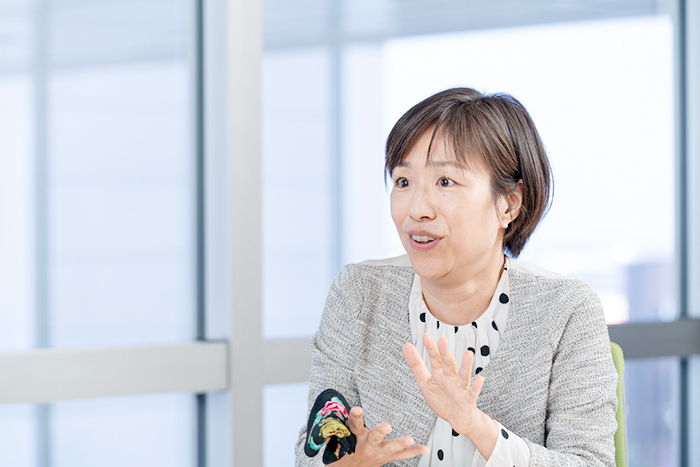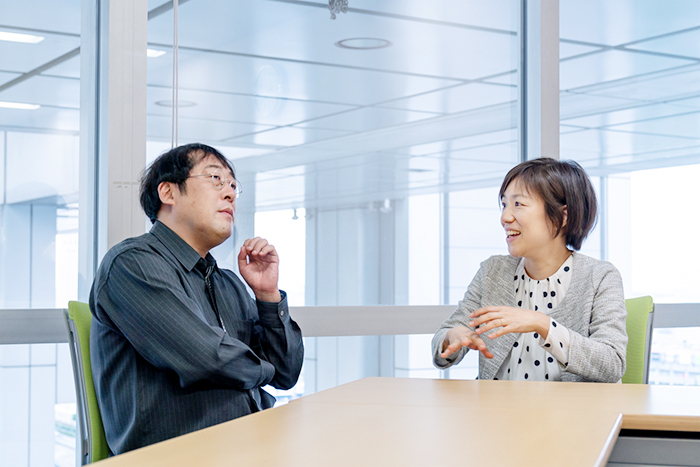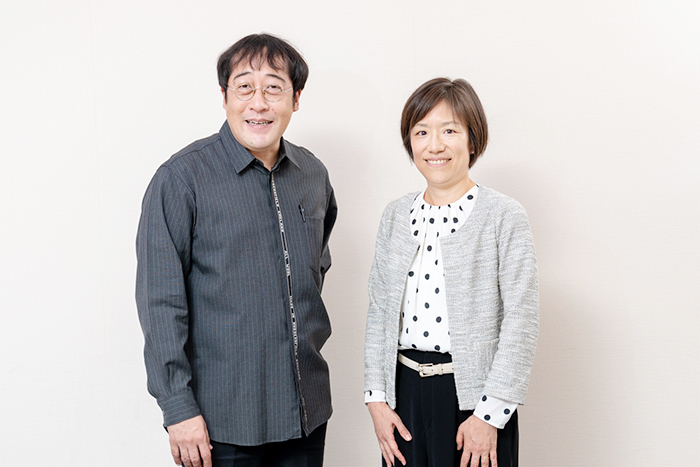Mr. Kuroki, renowned as a top-tier producer at Fuji Television, and Mr. Kitakaze, Chief Solution Director at Dentsu Inc. Their dialogue, spanning seemingly different yet closely related fields, highlights the sharp perspectives and struggles unique to their generation! The future of television and advertising may well rest on this "in-between generation"... This series presents their daily struggles and passionate insights across five installments.
The theme of the first installment is: "Can truly outstanding content be created using marketing techniques?"
How should we perceive the "age barrier"?
Kuroki: I was born in 1969, and Mr. Kitakaze was born in February 1970, so we're the same age, right? I hear you've admired Tamori-san since elementary school?! I was also involved with "Waratte Iitomo!" for a long time, so I feel a certain connection. Actually, our children are close in age too. My daughter is 24 and my son is 22. It's a pleasure to meet you today.

Koichi Kuroki (Fuji Television)
Kitakaze: Yes! Same school year, that's great (laughs). I've been a Tamori fan for 40 years. My kids are a 20-year-old daughter and a 17-year-old son, so yes, we're similar. It's my pleasure to meet you too. I have many questions, but first, could you share your thoughts on "age segmentation"? Both TV and advertising share the common goal of "facing consumers," and age-based segmentation for targeting is common. Lately, though, I've become skeptical about it.
For example, infomercials mainly target people in their 50s and older, but even people in their 30s sometimes watch infomercials and buy things, right? So, I think there could be a place for infomercials aimed at people in their 20s and 30s, or even younger teens. I feel like the triggers that make people want things aren't that different between younger and older folks. Similarly, maybe there's no age barrier when it comes to what people find interesting or funny... What do you think?

Yuko Kitakaze (Dentsu Inc.)
Kuroki: As Ms. Kitakaze says, it feels like the things that make people think "That's interesting," or draw them in, or spark their curiosity, are becoming less tied to age differences. For example, even in program planning meetings, younger directors seem less likely to say things like, "This information will appeal to the M3 and F3 demographics." But on the other hand, "age group stereotypes" are still deeply ingrained.
Kitakaze: Even when watching TV at home with my family of four, we all laugh until our sides hurt at the same parts, the same episodes. Ultimately, I think the core of what we find funny or exciting is the same for everyone, so maybe we should stop categorizing people by age.
The idea that the distinction between F1 (women aged 20-34) and F2 (women aged 35-49) suddenly changes the moment you turn 35 is a bit odd. People don't live their lives based on arbitrary age boundaries. I felt a strong sense of dissonance when, after turning 42, I started getting tons of online ads saying "To the 42-year-old you." The programs you've worked on, Mr. Kuroki, tend not to be very age-specific, right?
Kuroki: I feel incredibly fortunate to have worked on the same programs for such a long time. It allowed me to produce with the sense that "the program can grow alongside its viewers." It's like the program exists within people's lives. When that happens, target demographics and age groups become less relevant. You get viewers spanning two or three generations, and the show becomes recognized as something important in their everyday lives. While making "SMAP×SMAP" and "Waratte Iitomo!", I hoped people would see it that way, and I truly believed in that aspect.
The value lies in n=1.
Kitakaze: Mr. Kuroki, you've seen so many interesting people and things in the world of TV. Having lived a life where "TAMORI-san is just there" as a matter of course, what do you find "interesting" now?
Kuroki: "A life where Tamori-san is just there as a matter of course" (laughs)! That phrase is incredibly interesting. That might be exactly the life of everyone who watched "Smile, It's Okay!" all along! Sorry, I digressed. (laughs)
Regarding the earlier talk about age, I'm starting to think it's more important not to target a broad age group, but to have a specific, personal someone in mind when you want to show something. It's about starting with that "important person's perspective," no matter what you're creating.
When I asked Yasuharu Konishi from Pizzicato Five to create "Shingo Mama's Ohayō Rock," I was so happy when I got home and my kids were dancing like crazy to it. I still remember it vividly (laughs). Rather than "making something targeting a certain age group," I think the feeling of "wanting to show it to my family," "wanting to show it to my parents," "wanting to show it to my boyfriend," or wanting to show it to someone specific is actually the most important thing.
Kitakaze: I totally get that. I also start by thinking, "Would I want this?" or "Would my kids be happy if I gave this to them?" In marketing, they often say, "Don't speak for the whole based on just one." That "n" represents the size of the population sample; for opinion polls, they say you need n=3000 or so. "Don't speak for the whole based on just one person" essentially means you shouldn't base your conclusions on a single opinion. But I believe that one person is enough. You can gain more insight from one person's raw, authentic voice than from the average of 3,000 people.
Kuroki: From your perspective working closely with daily life in advertising and product development, Mr. Kitakaze, are there any tricks for "capturing consumers' attention"?
Kitakaze: Taking ads in the same video genre as TV programs as an example, my son's generation is called "digital natives" – people born and raised with smartphones. So, ads need something memorable to happen within the first five seconds. My son once told me, "Watching something for 15 seconds is kind of impossible" (wry smile). He gets bored around the 5-second mark. Indeed, in all his favorite commercials, something happens within the first 5 seconds. While finding something interesting itself transcends generational barriers, if you want young people to buy, you need adjustments specific to them—like showing it quickly or building several peaks.
The source of this conversation is here.
Editorial Perspective #01
The core of their discussion is the stance that "TV is absolutely not over. It's just in a transitional phase of evolution." That perspective felt fresh. Being from the same generation as them, I deeply relate. Our generation grew up with TV. From program production to marketing strategies, it was always spot on. Whatever we wanted at any age, TV delivered it without fail.
In childhood, it was superhero shows, magical girl series, and beloved national comedians. During adolescence, it was music programs packed with idols and a bit of risqué content. In college, it was debate shows... Whatever we wanted at each age, television always delivered. So we watched. We watched, completely engrossed. But now it's different. Clearly different. Yet, if asked, "Is television no longer necessary?" the answer is no. That "no" part feels vaguely ambiguous, and it seems like the Heisei era ended without us fully addressing it. I want to dig deeper into that. No, as someone from the TV-raised generation, I feel it's my duty to dig deeper.
"Talking about TV in the TV gap" – Next time, for the second installment, we'll explore the theme: "What exactly is the power of a team?"









